18 comments so far
A new article that directly answers one of my questions from the previous articles, outstanding! Now I have more! Please don’t take them the wrong way; I am in awe of Jean-Pierre Houdin! When sealed, the ‘known’ entrance would provide a smooth, finished wall but I really don’t see why it would exist at all in this theory. With the ‘noble circuit’ entrance (that was engineered from the start in theory) why would there be two entrances to the burial chamber? Another way to say it is, “if it was going to be sealed up in year 17, why does it exist at all”? During construction, the chamber would be accessible from above (until the ceiling was in place) while the grand gallery continued to function in its proposed role as counter weight helping lift in more beams and rafters. If workers needed to enter the chamber they could enter through the ‘noble circuit’ entrance.
“We must also be aware that the cross-sectional area of the corridor between the Grand Gallery and the portcullis chamber is smaller than that of the corridor between the portcullis chamber and the King’s Chamber.” It is clear that the sealing block was not brought in, but what prevents it from being simply staged in the portcullis chamber…then being pushed into place sealing the kings chamber…then lowering the blocking stones.
“Happily,” the architect continues, “many witnesses had made drawings and taken photographs to prove the existence of this block.” But as to where it is now… mystery!” This implies that Jean-Pierre has requested to see the block….and been given the run around. True? I shudder to think, but I would speculate that it was broken up in order to remove it.
Just for a bit of fun, I notice that the west wall appears to have a blocking arrangement that is very similar to the ‘known’ entrance (from your article picture)! The block above the stone has a stress crack (repaired) as if weight were now being transferred to the block below when originally there was none. The northern most seam tolerance does not appear as close as other stones. The Bent Pyramid had a western entrance (though to a different chamber). Has Jean-Pierre looked at or considered this?
Very interesting observations!
Do you think block 1 would ever be removed? It appears that it would not open a very practical everyday acces to the antechambers due to the difference in rooms heights, and it would probably require cutting the block (Then the good Dr. would have another one to haul away!)
Would it be more reasonable to gain access to the antechambers from the lower side and just leave the corridor to the KC blocked?
Hi Rico,
I am so sorry I took so long to write a response to your question! Please be assured that I always enjoy your comments and questions, and somehow this one was overlooked. I have been doing some maintenance on Em Hotep today and noticed that there are some unaddressed questions and comments, and even some that were accidentally caught in the spam filter and have been in Limbo for months! And as there are more pieces of spam than I can possibly dig through—literally thousands—I am sure I will not catch all of them. You can believe that I am checking the spam que regularly now!
So for your observations and concerns, I think that the first logical step is to do the non-invasive surveying that would confirm the existence of the chambers and passageways, as well as their layout. Once we know what we are dealing with, Jean-Pierre and the Project Khufu team would be able to make a more educated proposal to the SCA for how to proceed. Laval University already has the people, equipment, and plan for this, now it is a matter of securing all the permits to continue with the work. The situation in Egypt at the moment has not just changed the pieces on the board, in many ways it has changed the rules of the game. But everyone remains confident!
As for pulling out blocks, that might be a tricky case to make! Surely proof of the existence of the antechambers and the internal ramps would make it worthwhile to open these chambers up in a minimally invasive way, especially since their continued closure pretty much assures there will be artifacts of some variety still within. Maybe even… well, I’ll leave it unsaid. Dare to dream! 😉
But even if the Laval mission can simply prove that there are hollow spaces behind block 1 or elsewhere, the Djedi Project has proven that we have the tools and technology to drill into and explore these places with very little (practically none) risk of damaging the pyramid or even significantly scarring it. Scoutek and the Leeds robotic team have proven that they can use miniature crawler and snake cameras to go where nobody has been before, at least nobody in 4,500 years!
Methinks Khufu’s Pyramid has not seen its last endoscopy!
-K
has anyone noticed that the block was left infront of the wall, so that no one could get to the second entrance, or was it used as a step to stand on to cut or push into the wall. its just a long way to move a big block from original place
the second thing is the lid to the box is no where to be seen, that is because it is in the second room behind the wall, it was used, just like the block that was moved
This theory of internal ramp and antechambers are very interesting. I have been thinking of hidden rooms and nobody has yet recovered the real treasure of kufu since my childhood. I have read about the Theory of Mr JP houdin but I couldnt see any explanation about the narrow shafts in any place.. Do you or does he have an explanation about the shafts?
Hi Mehmet,
Thank you for reading Em Hotep and taking the time to write 🙂
Jean-Pierre’s theory is that the shafts coming from the Queen’s Chamber were used for communication during construction, and that the shafts coming from the King’s Chamber were primarily for ventilation.
You can read more about the shafts here at Em Hotep with these articles:
The Pyramid Shafts: From Dixon to Pyramid Rover
and
The Djedi Project: The Next Generation in Robotic Archaeology
Cheers!
-Keith
I was thinking that the logical place for the large block that has gone missing was that Hawas may have put it down into the pit Al-Ma’mun dug under the floor behind the sarcophagus.
I also have an idea that the “ventilation shafts” may have been channels for ropes for some reason, perhaps to act as a telegraph of some sort, or to be used as some method to activate a lever or pulley system used at some point.
Fascinating info on the “true entrance”
My question is - Can the horizontal tunnel in the subterranean chamber not be a dead end? Can the same method of looking at the placement of stones allude to another chamber or shaft at the end of the tunnel? Maybe it has a similar stacking configuration to take the weight off a lower stone that may be removed?
I really hope they complete this exploration during my life-time. I have been fascinated by ancient Egypt for nearly 50 years. Jean-Pierre’s theory is the most plausible and feasible I have ever seen about how human beings built this thing with the technology and tools of the time.
No need for aliens, anti-gravity, Atlantis or Annukacki!
Hello there.
Yours is an utterly fascinating read. I watched the video first time this morning about M. Houdin, and now it’s 3pm and I’m still reading this webpage after being directed here by him on a forum.
I lived in Egypt from ’93 to ’99 and saw the pyramids nearly every day whilst riding my horses. They changed their look depending on the time of day and weather and were always stunning.
Whilst I was reading about the construction of the pyramid a thought occurred to me: Where, in your graphics on this website, was the inner construction tunnel shown? It’s not mentioned at all! Mr Houdin’s explanation is that they had used it to finish the upper 3rd of the pyramid and they would already have had to start to build it into the base to gain access from the base to the top (which is how it’s shown in the graphics in the original video).
Soo…I’m writing to say that methinks your static graphics and descriptions might need some tweaking to match up the information! 😉
Best regards,
Diana Kisi (currently in Melbourne Australia)
In adition to my above post:
It is possible that all these early kings decided to be buried elsewhere. J.P. Lepre in particular presents a compelling argument that all early kings had two burial edifices, one in the north and one in the south, to represent the duality of their reign over both Upper and Lower Egypt. On this basis he suggests that the reason that so many coffers have been found empty, even when sealed, is that the pyramids in which they were found may have been merely cenotaphs connected with ritual practices
Could the repair work being done be related to the settling ?
great article
I am a fan of Jean-Pierre Houdin’s great intuitive insights.
I am glad we agree that 28 blocks were used in the north wall. (including the one to seal the chamber)
to the author of this article could you please help me out with the south wall count….?
I am trying to get a count for the south wall and unless I go count the blocks myself, I will need to rely on somebody like yourself who has been in the chamber recently.
from my current sketches etc. I have anywhere from 35, 36, or 37 blocks used in the south wall from the various sources on the internet.
Do you have a sketch that confirms any of those numbers 35, 36, 37?
much appreciated
selah
Raphael
p.s.
could you tell me how many blocks where used on each course in your final tally.
i.e. the problems creating a different total count seem to arise with the first three courses, cracks are counted as two blocks etc.
an accurate count would be grand.
thanks again
selah
Very interesting Marc.
I am curious… do you know the exact dimensions of the block which Jean-Pierre Houdin observed exactly matches the entrance in the east corner of the north wall? If not ALL three dimensions - at least do you know the dimensions of the present entrance (height and width)?
Much appreciated.
Alan Green
http://www.ToBeOrNotToBe.org
https://www.youtube.com/watch?v=xHiad18ZwcY




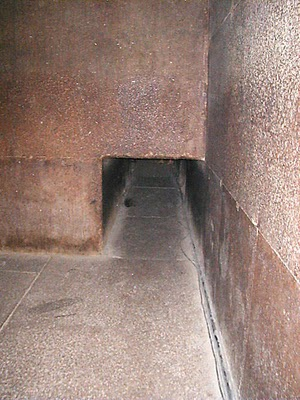









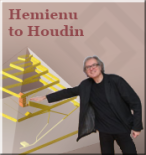








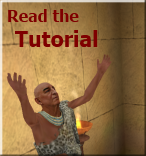
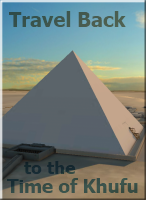



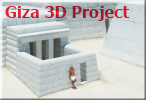
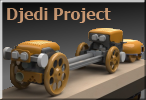
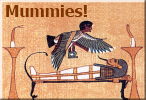









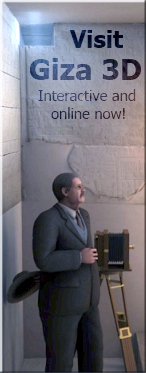


invisalign cost vs braces
Two Entrances to the King’s Chamber and How They Were Sealed—More With Jean-Pierre Houdin